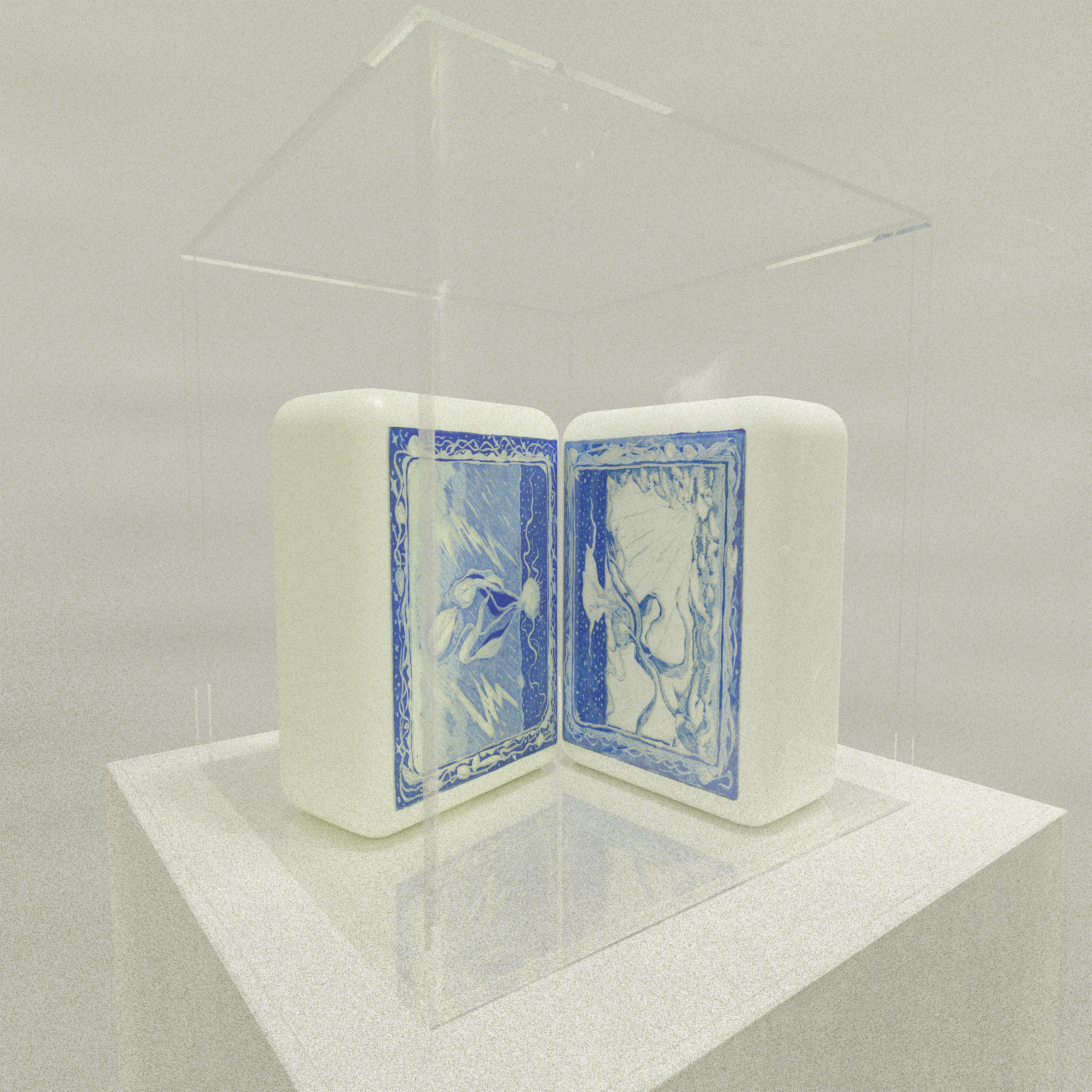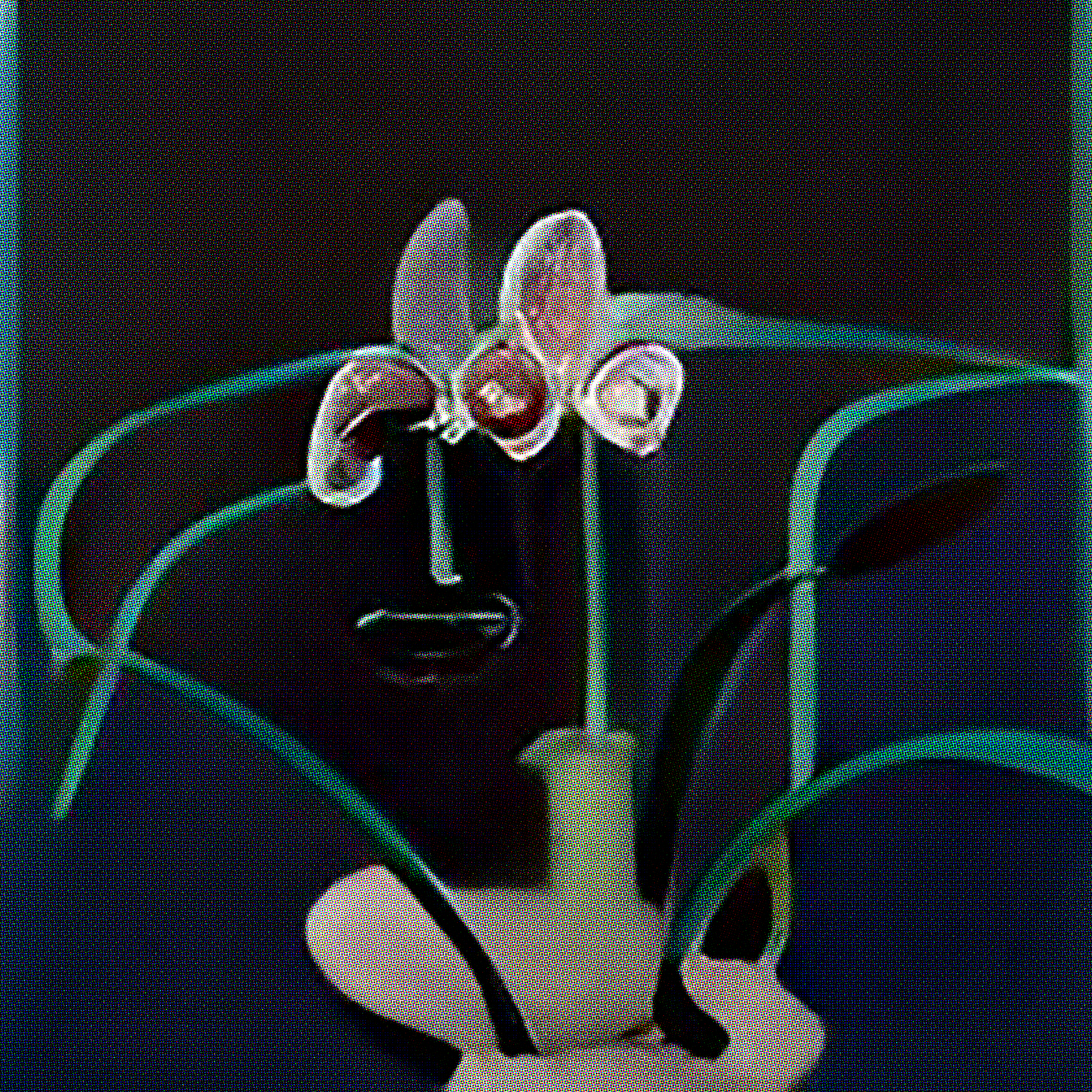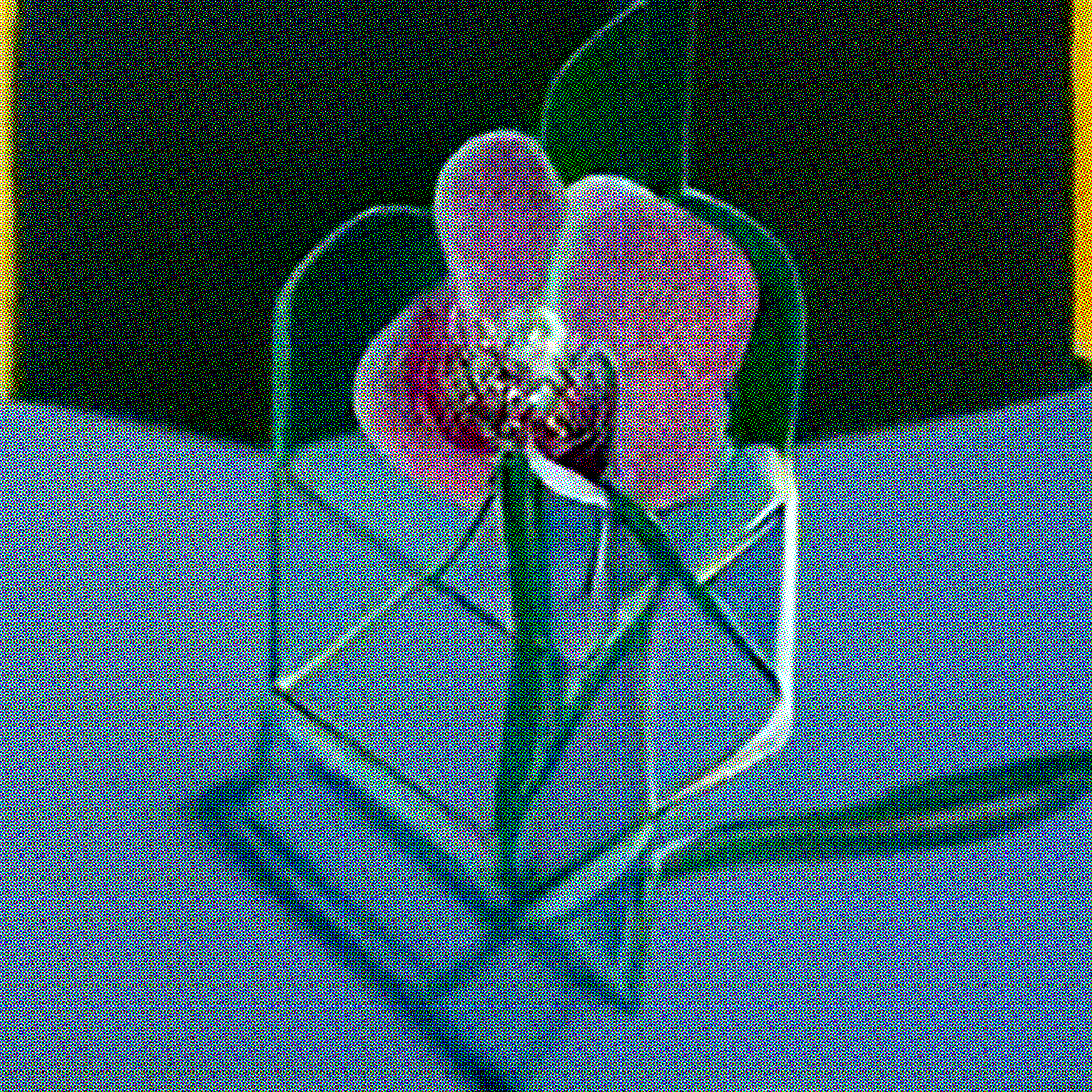Rehash of a Rehash
Introduction: Time as a Glass Cube
My art consists of a collection of visual works that depict the duality of incompatible phenomena. For the previous research, I’ve focused on the ambivalence of the two contrasting urges that I have. One is the urge to erase my traumatic memory, and the other is the desire to preserve/ resurrect it because I simply couldn’t let go of the fact that trauma attributes to who I am.
I have been researching methods that can visualize this ambivalence and started testing out forms of finite materials. Materials that are malleable and can warp depending on the external condition of the environment. I have chosen soap and ceramic to show the contrast of the material that has different resistance. Also, the fact that the two materials are undistinguishable at a brief glance, due to their similar shade and texture was an important part of this decision. Currently, I am in the middle of transferring my prints to a soap-shaped sculpture. One sculpture is made out of soap, which symbolizes the ephemerality of loving memories, showing how easily they melt away. The second sculpture is soap-shaped porcelain, showing how traumatic incidents resurrect relentlessly. This is a way of manifesting how people with obsessive-compulsive disorder can’t stop fixating on a certain piece of memory.
My next step after deciding on the materials was to seize the moment, a moment when the material is not quite pristine yet not completely disintegrated. The strategy that I came up with is to display them in a museum-like manner. As if they are relics that have stopped corroding, like the objects that were put into glass cases at the British Museum. This can be connected to the context research that I have done previously. “The Maybe” a collaborative artwork by Tilda Swinton and Cornelia Parker, Mark Quinn’s “Garden” and the “Mold” series Silas Inoue has made are the perfect examples of petrified time. You can never seize the moment, because time is passing by regardless of whatever futile effort you make. Nonetheless, it is possible to create the illusion of it, by creating a facade out of glass cases. If time were to be perceptible I think it would be in a form that has three axes, each axis referring to the present, past, and future, and the area that intersects two axes would be transparent glass. Because to me past, present, and the future never seemed to be on the same linear spectrum. They are not consecutive concepts that affect each other, it always felt like they had their individual path never intersecting one another. The reason why the intersections are glasses is because of the refraction they cause when the two glasses are overlaid. Refraction is the intrusion of the past violating the present or the future violating the past and present.

I’ll love you forever (as long as I’m living my baby you’ll be)
soap and porcelain with transfered print,
27x19x10 cm ea, 2023
UNIT 2: Rehash of a Rehash
For this term, my experiments have become more practical, in order to carry out the plans I have made. The biggest transition is that I have added a new piece of work that is using a more personal and intimate approach. The previous term focused more on analyzing the consequences of relationships, the ambivalent emotions, and the empirical desires. For unit 2 I decided to give a further context of where this urge has spawned from, tracing back the origin. I have reflected deeply on my current and past relationships and used them to form allegories to describe the story behind the ambivalence I felt.
To achieve this I used moving images for my new artwork. My video describes the conflicting urge to be assimilated but also the urge to want to detach and isolate myself from everything.
The video explores my journey of reflecting on the relationship I had with my friend and the cause of the falling off. I have figured out that I have adopted a highly nihilistic perspective on everything because of a certain incident. The incident was that, I finally became aware that my ego, my art, and all the things that I believed were mine, were just a knockoff of others.
I decided not to hesitate to abandon anything and to deem everything unimportant so I could brace myself when I am abandoned or replaced for being a reductive reproduction of others. I end up showing conflicting feelings and convincing myself that I’m not afraid of being replaced, even though it is an obvious lie.
On the surface, the video is telling a story about the parting of me and my friend and eventually offering a sign to reconcile. However, internally it is about my fear of degenerating into a bad artifice of a great being. I’ve realized in this fast-paced secular world, without the unique individuality that stands out, I will be easily replaced. The video is suggesting that the fear of getting replaced can be spotted in social contacts but also from the overwhelming speed of digital technological developments.
This video can be divided into two parts. The first part is about denying the fears and emotions that I felt during the parting. The second part shows the progress of gradually acknowledging where my fears come from and admitting them.
In the first part, the video starts with an indifferent narration, talking to himself that he does not consider anything irreplaceable. This voice explains his endeavor to overlook his fears and emotional fluctuation that he experiences through the falling off. The narrator ends up taking a fatalistic view of what had happened. Convincing himself that the parting was inevitable and was destined to happen, he was incapable to do anything to change the consequence.
In the second part of the video, the narrator slowly admits his emotions and faces the reason why he was lying to himself. He realizes his fear of being replaced was not only caused by his friend but the fear of losing his individuality. He regrets the time when he wasn’t being truthful to his friend and offers a heartfelt apology.
There are several references that helped me construct the key parts of this video.
First I tried to adopt the techniques that can be discovered from David Lynch’s short films. His early films are often considered experimental and eccentric. I think that reaction comes primarily due to the hand-crafted frames combined with real-life footage. There is this sense of unpleasantness and uncanny created by the discord of two distinct expressions. This has inspired me to make my footage on three levels.
1.First, is a painterly like moving image. This is footage that seems realistic but is more organic and fluid
2.Second, is the semi-realistic footage. This footage is a 3d generated animation that seems to be fairly more realistic than the first type of footage. They portray a virtual space and they are realistic to the point that is almost indistinguishable from reality
3.Third, is footage of real life, footage that involves real space, objects, and people.
Juxtaposing and stitching these three types of footage has the effect of obscuring the line between reality and digital space. This aesthetic was integral to the message of the artwork. Especially for the part where I admit my fear about getting replaced not only by my friend but even by the AI image generators.
This leads to the other reference that I’ve used. This part mentioning AI-generated art is a critique of the contemporary art scene. I recon most artists will agree in this present age, that we have innumerable options to access images. I remember merely a decade ago I went roaming around libraries just to find a book that has pictures of David Hockney’s early etchings. I still tend to do the same thing, but from time to time I find myself looking through Google Images and Pinterest to find the same collection of his etchings. The primary reason for that is because it is simply so accessible and time efficient. However, the other reason for “googling” David Hockney’s etchings is because of the related image that comes with the search. The algorithm already analyzes similar artworks that I am likely to click on. Am I tempted? probably yes, because the reason for searching Hockney’s image in the first place is not to appreciate it but to snatch a part of his art and implement it into mine. So for people like me, the algorithm’s recommendation is probably a new pantry that is bountiful of Hockney-esque images. Living in the modern age it almost seems impossible not to entrust your creativity, your source of visual knowledge to digital technology.
In Hito Steyerl’s ahead-of-time essay “Digital Debris” she mentions how creatively digital technology wrecks history and counties producing superfluous data.
Actually, the contrary is the case: history is not over. Its
wreckage keeps on piling sky-high. Moreover, digital technologies
provide additional possibilities for the creative wrecking
and degradation of almost anything. They multiply options
for destruction, corruption, and debasement. They are great
new tools for producing, cloning, and copying historical
debris. As they get amplified by political and social violence,
digital technologies become not only midwifes of history, but
also its (plastic) surgeons.
From Hito Steyerl’s - “Digital Debris”
This essay was published back in 2011, but it seems to be more than relevant in the way that we are making new kinds of “digital debris” and celebrating them. Over the past two years, AI-generated art has permeated the social network, art galleries, journals, and of course art itself. I decided to use some of the available applications and test out if they can make believable fabrications of one of the most famous artists. I have used tags that are likely to be more responsive and here are the results.
Image generated by using DALL-E2
Tags: Francis Bacon, orchid, oil painting
Image generated by using DALL-E2
Tags: David Hockney, orchid, oil painting
Image generated by using DALL-E2
Tags: David Hockney, orchid, lithograph
I decided to copy the AI image on my own by etching, drawing, and painting and realized these images had more depth in them than I expected. Not one pixel of the AI image beholds any intention or meaning behind it. Intentions such as “ I should add another light green colored brush stroke behind the thick orchid branch so it can look more 3 dimensional” or “ Adding a tilted vertical line near the corner is going to make this image more like Francis Bacon’s”. All the AI program can do is to be trained blindfolded and guess the patterns of codes that are likely to be preferable. Yet it somehow adapted to the state to fabricate an image that is full of artistic expressions.




LEFT is the AI generated image and RIGHT is my drawing
When I presented my copy of the AI image it got good feedback, as if people did not care it resembled the artworks of Bacon or Hockney. Not to mention the fact that they did not question if my drawings were sketched by AI. After all, the public seems to be chasing the cloned historical debris and even engaging in making more of them. However, I can’t blame anyone for this phenomenon, because isn’t that what a lot of contemporary artists do? Combining the visual codes that we have learned and generating a rehash of a rehash and deluding ourselves as if it is our brainchild?
The second part of my video is discussing this doubt and fear that I had, but gradually I came to the acceptance that no one is actually one-of-a-kind. Even the greatest artist we look up to can be mechanically analyzed and we will find out they also once have resembled someone else. The important part is to watch yourself and not be submerged by this fast-paced digital wave and commit oneself to be a rehash of a rehash.
